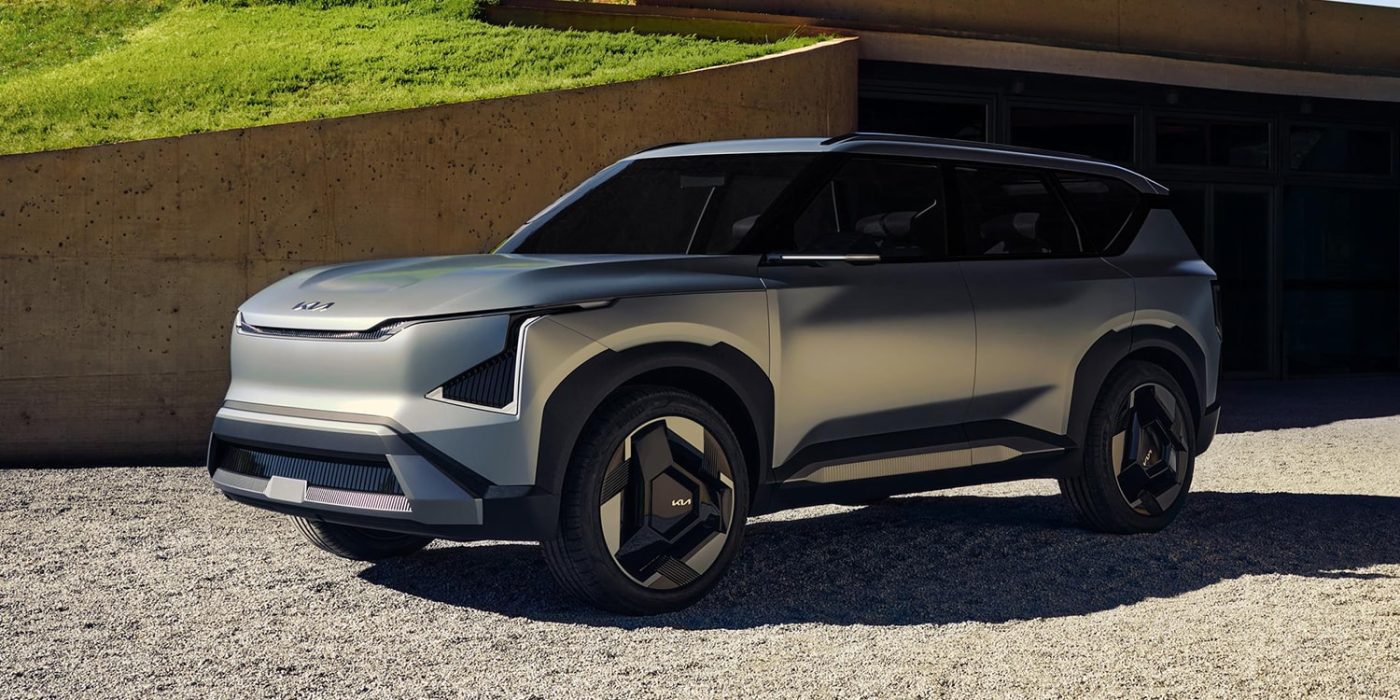Kia increases EV sales targets by 33 per cent by 2030
Kia is getting more ambitious concerning sales of electric vehicles. Or the carmaker is getting more confident. Either way, it again increased its EV sales forecast for 2030 and wants to sell 1.6 million EVs annually by then.
Kia also adjusted its intermediate goal, saying it wants to sell one million electric cars annually from 2026. That corresponds to an increase of 33 and 25 per cent, respectively, compared to the goals announced at the 2022 Investor Day. In March 2022, the South Koreans aimed to sell 807,000 BEVs in 2026 and 1.2 million battery-electric cars in 2030.
The increased sales planning becomes even clearer compared to the forecast from February 2021: at that time, Kia said it would sell 880,000 battery electric cars in 2030. Almost two years later, Kia expects EV sales to be 81 per cent higher by then.
Kia’s updated annual sales target for 2030, including combustion and hybrid vehicles, is 4.3 million units (up from 4 million in 2022). The goal is that 55 per cent – or 2.38 million units – are electrified vehicles, meaning pure EVs and hybrid cars. However, this also means that Kia expects slightly lower numbers for internal combustion vehicles: The BEV target was raised by 400,000 cars, but the total volume by only 300,000. Given the massive adjustment of the EV sales plan within 26 months, one should not read too much into the difference of 100,000 vehicles – but it is clear that the management expects more growth in electric car sales than in combustion vehicles.
And Kia is not just getting more ambitious regarding sales figures – the carmaker announced that it would introduce 15 new purely electric models by 2027. That is one more than what was said last year – almost double what the carmaker planned for in 2020.
There are no details about the planned vehicles yet, but the large EV9 celebrated its world premiere, and a smaller EV5 has also been announced. However, the latter is most likely intended for the Chinese market. Around the premiere of the EV9 – which is likely to be the most expensive Kia ever – the top management emphasised that they want to remain a volume manufacturer with affordable (electric)cars, even though the EV9 is intended to expand the product range upwards and win some customers from premium brands.
Overall sales and increasing EV sales were the core strategies 1 and 2 of Kia’s ‘Plan S’. As part of the third core strategy, Kia wants to equip all new models with modern connectivity solutions by 2025, down to the smallest car. The fourth pillar of the strategy is the already known development of a “tailored business structure and offer an integrated solution for PBV”. With these “Purpose Built Vehicles”, Kia wants to become the world’s leading manufacturer of special vehicles, such as autonomous shuttles for driving services. The first PBV model is scheduled for market launch in 2025.
The further developed strategy is also linked to financial targets: in 2030, sales are to exceed 110 billion euros (original figure: 160 trillion won), and the operating profit is said to be 16 trillion won or eleven billion euros, resulting in an operating margin of ten per cent.
During the North American premiere of the EV9, Kia also confirmed what had already been indicated: the large electric SUV will be produced in South Korea and from 2024 in the US, specifically at the plant in West Point in the state of Georgia.
kianewscenter.com (strategy), kianewscenter.com (EV9)





0 Comments